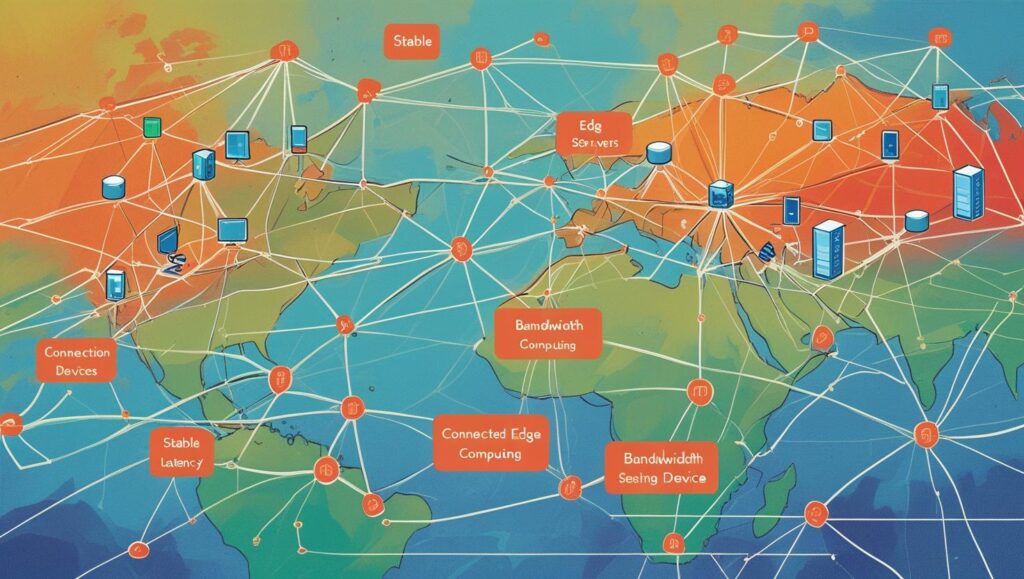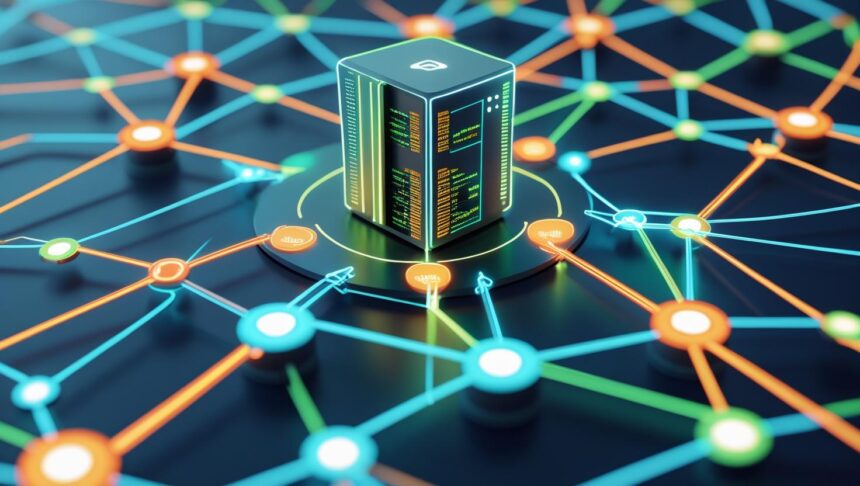In today’s hyperconnected digital world, data is the new currency—and how we process that data is changing dramatically. The evolution from centralized cloud models to more decentralized processing architectures is giving rise to a powerful movement: edge computing.
This shift may not be as flashy as artificial intelligence or virtual reality, but its impact is equally transformative. Edge computing is redefining how we handle, store, and analyze data, especially in scenarios that require real-time decision-making, low latency, and increased reliability.
From smart cities to autonomous vehicles and the Internet of Things (IoT), edge computing is the backbone that enables fast, efficient, and secure data processing—right where the data is created.
What is Edge Computing?
At its core, edge computing refers to the practice of processing data as close to the source as possible. Instead of sending raw data to a centralized cloud server, edge computing systems analyze data at the edge of the network—typically on local devices or nearby servers.
This method greatly reduces latency, saves bandwidth, and enhances data privacy. For example, instead of your smart thermostat sending every data point to the cloud, it processes most of the information locally and only shares key insights.
Edge computing is not here to replace cloud computing. Rather, it complements it, creating a hybrid model that balances speed, efficiency, and storage capacity.
The Historical Context: Why Edge Computing Emerged
To understand why edge computing is gaining momentum, it helps to look back at the traditional model of data processing. For years, organizations have relied on centralized data centers and cloud platforms to manage everything—from applications to analytics.
This model worked well when data volumes were relatively low and latency wasn’t a critical issue. However, with the explosion of connected devices and real-time applications, centralized models began to show their limitations.
High latency, bandwidth bottlenecks, and concerns over data security became serious obstacles. Edge computing emerged as a solution that could address these issues by decentralizing data processing tasks.
How Edge Computing Works
The fundamental idea behind edge computing is to process data locally on hardware that’s situated closer to the user or data source. These edge devices could be anything from sensors and smartphones to routers and micro data centers.
Here’s how it works:
- Data Collection: A device or sensor collects data.
- Local Processing: Instead of sending that data to a cloud server, the device itself or a nearby edge server processes it.
- Action or Transmission: Based on the processing, the system either acts (e.g., triggers an alert) or sends only essential data to the cloud.
This localized model results in faster decision-making, less data transmission, and improved system efficiency.
The Role of IoT in Edge Computing
The rise of IoT (Internet of Things) has been a major driver in the adoption of edge computing. Devices like smart cameras, fitness trackers, and industrial sensors generate huge volumes of data. Sending all this data to a centralized cloud would be inefficient and costly.
By analyzing and acting on data locally, edge computing enables IoT devices to operate more effectively. For instance, a security camera can detect motion and only upload relevant footage, rather than constantly streaming video to the cloud.
Edge computing is thus not just a trend but a necessity in the expanding world of IoT.
Benefits of Edge Computing
Edge computing brings a wide array of advantages that are fueling its adoption across various sectors. Some of the most important benefits include:
1. Reduced Latency
Latency is the delay between a user’s action and a web application’s response. In scenarios like self-driving cars or industrial automation, even milliseconds matter. By processing data closer to the source, edge computing minimizes delays and improves real-time decision-making.
2. Bandwidth Optimization
By handling data locally, edge computing significantly reduces the amount of data that needs to be sent to central servers. This leads to lower bandwidth usage and cost savings for organizations.
3. Improved Data Security and Privacy
Processing sensitive data locally means there’s less need to transmit it across networks, reducing the risk of interception or data breaches. This is particularly important in sectors like healthcare and finance.
4. Increased Reliability
Even if a central server goes down or there’s a network outage, edge devices can continue to function independently. This makes systems more resilient and reliable.
Challenges and Limitations of Edge Computing

Despite its many benefits, edge computing also comes with challenges that organizations need to navigate carefully.
1. Infrastructure Costs
Setting up edge nodes and devices can require significant investment in hardware and software. These costs can be a barrier for small and medium-sized enterprises.
2. Complex Management
Managing numerous edge devices across different locations adds complexity to IT operations. Ensuring consistent performance, security, and updates can be daunting.
3. Data Synchronization
With decentralized processing, keeping data synchronized across all systems becomes more challenging. Organizations must implement robust protocols to ensure consistency.
4. Security Risks
While edge computing reduces some security risks, it introduces new ones. Each edge device can be a potential attack vector if not properly secured.
Key Use Cases Across Industries
Edge computing is being deployed across multiple sectors, revolutionizing operations and enabling new capabilities.
1. Healthcare
From wearable devices monitoring patient vitals to real-time diagnostics in emergency rooms, edge computing is making healthcare faster and smarter. It helps reduce latency in critical care scenarios and ensures patient data is processed securely.
2. Manufacturing
In smart factories, edge computing enables real-time monitoring and predictive maintenance. Machines can identify faults and correct them instantly, reducing downtime and improving efficiency.
3. Retail
Retailers use edge computing for real-time inventory tracking, customer analytics, and personalized shopping experiences. Smart shelves, beacons, and AI cameras provide insights without overloading central servers.
4. Autonomous Vehicles
Self-driving cars rely on edge computing to process massive amounts of sensor data in real-time. This ensures immediate responses to road conditions, obstacles, and traffic signals.
5. Smart Cities
Traffic lights, public transport systems, and utilities in smart cities use edge computing to make real-time decisions. This leads to better traffic management, energy efficiency, and public safety.
The Relationship Between Edge and Cloud Computing
It’s a common misconception that edge computing is a replacement for the cloud. In reality, the two work together in a complementary fashion.
The cloud remains essential for long-term storage, big data analytics, and machine learning model training. Edge computing, on the other hand, handles time-sensitive processing closer to the source.
Together, they form a hybrid model that offers the best of both worlds: the scalability of the cloud and the immediacy of edge processing.
The Role of 5G in Accelerating Edge Computing
The deployment of 5G networks is supercharging the capabilities of edge computing. With significantly higher speeds and ultra-low latency, 5G enables faster communication between edge devices and servers.
This is particularly important for applications like virtual reality, autonomous driving, and telemedicine, where every millisecond counts.
The synergy between 5G and edge computing promises to unlock a new generation of intelligent, real-time services.
Edge AI: The Next Evolution
When artificial intelligence meets edge computing, the result is Edge AI—AI algorithms that run on edge devices rather than in the cloud.
This allows for faster decision-making, reduced reliance on internet connectivity, and enhanced privacy. Use cases include:
- Real-time language translation on smartphones
- Facial recognition on security cameras
- Predictive maintenance in industrial equipment
Edge AI is set to become a game-changer, particularly in remote or mobile environments.
Future Trends in Edge Computing
As technology continues to evolve, several key trends are shaping the future of edge computing:
1. Edge-as-a-Service (EaaS)
Cloud providers are beginning to offer edge computing capabilities as part of their services. This makes it easier for businesses to deploy and manage edge applications without investing in infrastructure.
2. Green Edge Computing
Sustainability is a growing concern. Companies are exploring ways to make edge computing more energy-efficient through better hardware design and renewable energy sources.
3. Edge Containers and Kubernetes
Containerization technologies are being extended to edge environments. Kubernetes and other orchestration tools are helping manage applications across distributed edge nodes.
4. Edge Computing and Blockchain
Combining blockchain with edge computing can enhance data security, transparency, and integrity—especially in decentralized applications like smart contracts and IoT networks.
Why Edge Computing Matters
In a world increasingly defined by speed, data, and connectivity, edge computing offers a robust solution to modern digital challenges. By bringing computation closer to where data is generated, it not only improves performance but also unlocks new possibilities across various industries.
As organizations look to the future, embracing edge computing will be essential for staying competitive, agile, and responsive to customer needs. It’s not just an unseen revolution—it’s a foundational shift in how we think about computing, networks, and the flow of information.
Whether you’re a tech enthusiast, a business leader, or just a curious observer, the edge is where the next wave of innovation is happening.

